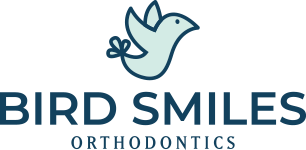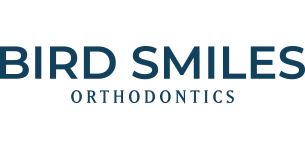It used to be that orthodontists waited until a child had all of their permanent teeth before starting braces or Invisalign® treatment. Unfortunately, for certain types of malocclusion (improper bite), this meant lengthy treatment often involving contraptions like headgear.
Today, thanks to advances in diagnostics and treatment planning, we can identify emerging issues long before they become full-blown problems. In some cases, intervening early while a child still has some baby teeth helps us to guide jaw growth and minimize future treatment needs.
The most common orthodontic appliance used for early orthodontic treatment, also called phase 1 treatment, is a palatal expander. In this post, the team at Bird Smiles Orthodontics in Washington, DC will walk you through everything you need to know about this highly effective solution for growing patients.
What is a Palatal Expander?
A palatal expander is an orthodontic device, generally used during phase 1 orthodontic treatment, designed to widen the upper jaw, or maxilla. It’s used when a child’s upper jaw is too small or narrow to accommodate all of the permanent teeth and/or relate properly to the lower jaw. The appliance attaches to the back teeth and sits against the roof of the mouth. It’s activated by inserting and turning a key.
Why Do Kids Need a Palatal Expander?
Every kiddo is unique, but here are some common reasons a child may need a palatal expander:
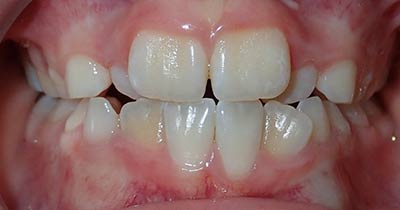
Crowding: When the upper jaw is too narrow to fit all the teeth, a palate expander can create more space, allowing the permanent teeth to erupt as straight as possible.
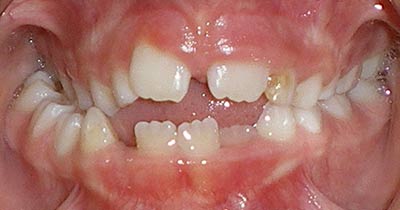
Crossbite: A palatal expander helps correct crossbites, which is when some of the lower teeth bite outside of the upper teeth.
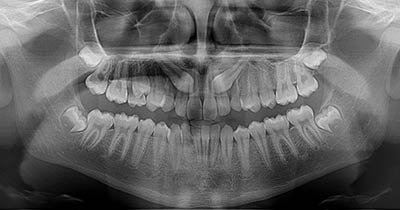
Impacted Teeth: Maxillary expansion may prevent permanent teeth from becoming trapped beneath the gums and bone.
Expanding the jaw when a child is in a rapid stage of growth can reduce the need for more complex procedures, such as tooth extractions or corrective jaw surgery, down the road. It also contributes to a smoother and shorter phase II treatment.
For even more details, check out Dr. Talley’s video: Why do we use expanders?
How Does a Palatal Expander Work?
The upper jaw doesn’t fuse into one bone until the mid-teen years. Before then, kids’ jaws consist of two halves that meet at what’s known as the midline suture.
A rapid palatal expander features a small screw in the center. Every day, you’ll turn the screw using a special key. This activates the expander, creating gentle pressure against the midline that gradually broadens the upper palette.
At Bird Smiles Orthodontics, the orthodontic expander is in place for only three months. Once the desired amount of expansion is achieved, we leave the orthodontic expander in place for a few more months to allow new bone to form in the center, stabilizing the expansion.
How to Adjust an Expander
Adjusting a palatal expander might seem daunting at first, but it’s pretty straightforward. You can even see a demonstration on our Instagram.
Here are step-by-step instructions:
- Have your child tip their head back and open their mouth wide so you can clearly see the expander.
- Insert the key into the hole in the center of the appliance.
- Gently push the key towards the back of the mouth until you feel resistance.
- Remove the key, ensuring the new hole is visible and ready for the next turn.
If you forget to activate the expander one day, don’t worry. Just continue with the schedule as planned—don’t try to “catch up” by making extra turns.
What Happens if You Turn Your Expander Too Much?
It might seem like common sense that the more you turn the expander, the more quickly your child’s jaw will grow. However, that’s not the case. Turning the screw too often can cause discomfort and unwanted changes in teeth and jaw alignment.
If this happens, stop turning the palatal expander and contact Bird Smiles Orthodontics. Dr. Sonia Talley or Dr. Katie Clark will assess the situation and let you know what to do next.
Palate Expander Before and After
If you’ve ever looked at palate expander before and after photos, you’re probably well aware that the result is a broad, beautiful smile.
That said, the first big change you might notice is a space developing between your child’s two front teeth. Don’t panic! This is absolutely normal and a sign that the expander is working. We’ll close the space by adding limited upper braces to reallocate the space to the areas where it’s needed.
The Benefits of Maxillary Expansion
At Bird Smiles, we only recommend early orthodontics if waiting will compromise your child’s results.
When it’s necessary, maxillary expansion with a palatal expander can:
- Make space for the permanent teeth to erupt correctly, reducing crowding and the risk of tooth impaction
- Help kids avoid more extensive treatment, including extractions and corrective jaw surgery, later in life
- Create the foundation for a strong, healthy bite
- Pave the way for a broad, beautiful smile
- Help with producing certain speech sounds
- Guide facial development, influencing a child’s future appearance
- Potentially open the airway, promoting nasal breathing and warding off conditions like obstructive sleep apnea
- Boost self-esteem and confidence
Tips for Caring for a Palatal Expander
Maintaining A+ oral hygiene is crucial when your child is wearing any type of orthodontic appliance, including a palatal expander. We recommend the following:
- Brushing: Ensure your child brushes their teeth and the expander at least twice a day, especially around the appliance’s metal parts.
- Avoid certain foods: Sticky, hard or chewy foods like caramels, taffy and whole apples should be avoided. These can damage the expander or cause discomfort.
- Swishing with water: Encourage your child to rinse their mouth with water after meals to remove any food particles stuck in the expander.
Are There Alternatives to Fixed Palatal Expanders?
Yes! While a fixed palate expander is the best choice for some kiddos, for others, the Invisalign Palatal Expander system could be a great option. The removable expanders don’t require turning with a key.
For example, we recently had a young patient who was moving internationally. Therefore, a traditional metal expander wasn’t going to be ideal. We opted to go with Invisalign expanders instead.
Schedule a Consultation With an Orthodontist in Washington, DC
If your child is age 7, or even if they’re younger but exhibiting signs of a bite problem such as a crossbite, schedule a complimentary growth and development checkup with Dr. Talley or Dr. Clark at our Tenleytown office.
The orthodontist will assess your child’s teeth and jaw and determine if a palatal expander is necessary. If it’s not, your little one will simply come in for occasional checkups until the time is right to start braces or Invisalign Teen. If they do need early intervention, however, we’ll explain the treatment process in detail and answer any questions you have, so you feel informed and confident.
